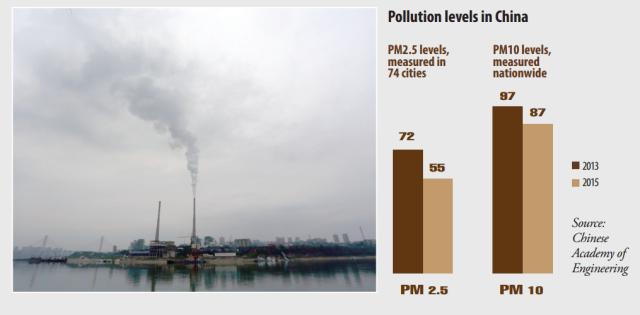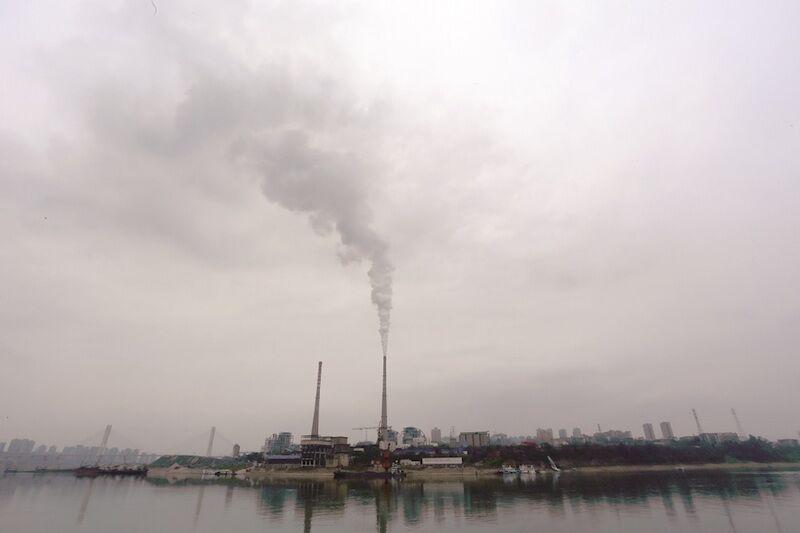While China has made progress in its battle against air pollution, it still faces massive challenges in the future, warns the Chinese Academy of Engineering (CAE), China’s highest government organization for engineering research. The institution issued an appraisal report on July 5 about the implementation of the country’s Air Pollution Prevention and Control Action Plan.

Pollution levels in China. Source: Chinese Academy of Engineering
While China has made progress in its battle against air pollution, it still faces massive challenges in the future, warns the Chinese Academy of Engineering (CAE), China’s highest government organization for engineering research. The institution issued an appraisal report on July 5 about the implementation of the country’s Air Pollution Prevention and Control Action Plan.
Issued in 2013 by the State Council, the Action Plan outlined 10 pollution measures to reduce the amounts of PM10 (particles with a diameter under 10 micrometers) in Chinese cities. The goal is to cut 2012 concentration levels by 10 percent by the end of 2017. The Action Plan also aims to control Beijing’s PM2.5 levels (consisting of particles with a diameter of 2.5 micrometers or less).
China is in the process of adjusting the structure of its industry, reducing its coal consumption and implementing measures that reduce air pollution levels caused by factories and construction. Because of these improvements, most of the 74 Chinese cities monitored by the CAE saw fewer days with heavy air pollution, and both PM10 and PM2.5 levels lowered. However, the report warned that some northern and western regions are still suffering heavy ozone pollution in the winter, accompanied by a rise in PM10 levels.
The report spoke highly of Beijing’s alert system, implemented last year, which protects its residents from exposure on the capital’s smoggiest days. If the air quality index is likely to reach a certain hazardous level for 72 hours straight, the Beijing government issues a “red alert,” which shuts down local schools, halts construction work and greatly reduces the number of cars allowed on the roads. According to the CAE, the capital’s average daily PM2.5 concentration level decreased by 17 percent and 25 percent respectively during the two red alerts in 2015. However, the report said it would be difficult for Beijing to meet Action Plan standards without taking extreme measures, especially in regards to winter coal consumption.

 Old Version
Old Version
